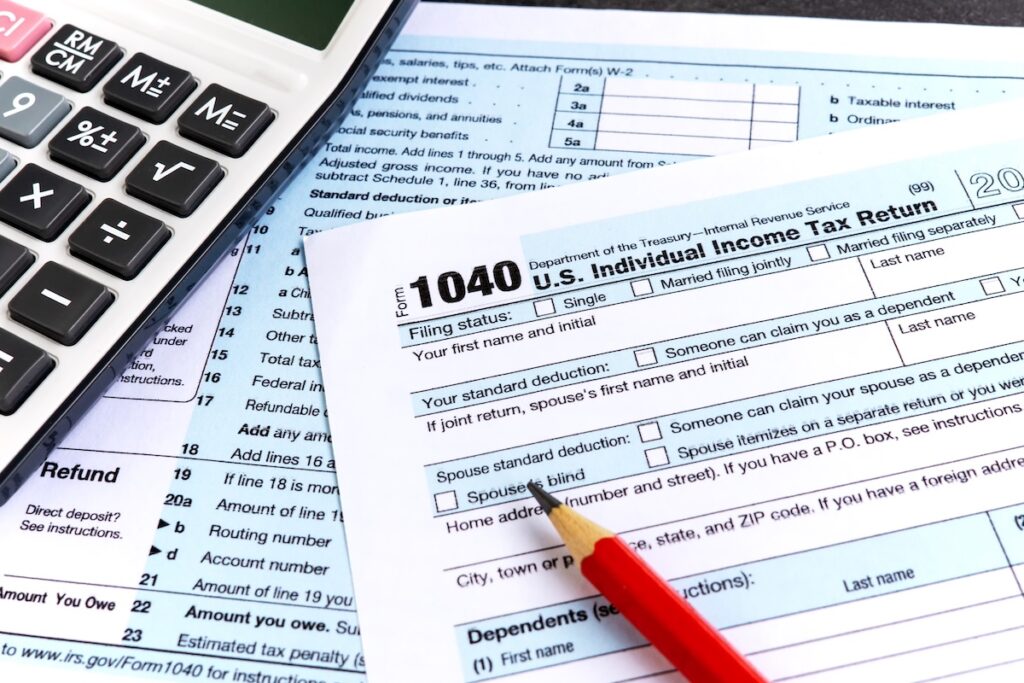Form 2210: Avoiding the Estimated Tax Penalty for US Expats
October 29, 2025 | Tax Forms | 4 minute read
Expat Tax Blog. Tax Tips for US Americans abroad.
Updated October 29, 2025
 All blogs are verified by Enrolled Agents and CPAs
All blogs are verified by Enrolled Agents and CPAs
Updated October 29, 2025

Paying estimated taxes can be confusing for Americans living abroad. Between juggling multiple currencies, income sources, and tax systems, it’s easy to miscalculate how much you owe the IRS. But what happens if you underpay or miss a quarterly payment? You could face an IRS underpayment penalty.
The good news? Understanding Form 2210 and how estimated tax payments work can help you avoid costly surprises.
Form 2210 Fast Facts
- Form Name: Underpayment of Estimated Tax by Individuals, Estates, and Trusts
- Purpose: Calculates whether you underpaid estimated taxes and determines any penalty owed
- Who Needs to File: Self-employed taxpayers, investors, retirees, and anyone with income not subject to enough withholding
- Threshold: Applies if you owe $1,000 or more in taxes for the year
What Is Form 2210?
Form 2210: Underpayment of Estimated Tax by Individuals, Estates, and Trusts, helps you determine whether you’ve paid enough tax during the year through withholding or estimated payments, and calculate any underpayment penalties if you haven’t.
This form is required if your tax payments or withholdings fall short during the year and you expect to owe $1,000 or more in taxes when you file your return.
Who Needs to File Form 2210?
You may need to file IRS Form 2210 if you’re self-employed or earn income that isn’t subject to regular tax withholding. This can include income from freelance work, investments, rental properties, or retirement benefits.
Form 2210 is also commonly required if you didn’t have enough federal tax withheld from your paycheck throughout the year.
Examples of taxpayers who may need to file include:
- Freelancers and independent contractors
- Small business owners
- Investors and landlords
- Retirees receiving pension, annuity, or Social Security income
- Individuals earning alimony, dividends, or other un-withheld income
When Do I Need to File Form 2210?
If you determine that you owe an underpayment penalty and wish to pay it with your tax return, you’ll complete and file Form 2210, reporting the penalty amount on Form 1040.
Alternatively, you can omit the form and allow the IRS to calculate your penalty and send a bill.
You’re only required to attach Form 2210 if you request a waiver or use a special calculation method, such as the annualized income installment method (more on this below).
How Is the Underpayment Penalty Calculated?
While a combination of estimated payments, withholdings, and expat tax exclusions or credits, such as the Foreign Earned Income Exclusion (FEIE) or Foreign Tax Credit (FTC), eliminates most of your taxes due, you won’t owe an underpayment penalty.
However, if you owe $1,000 or more in taxes, the IRS calculates penalties quarterly based on missed payments.
For example, if you owe $1,600 in total taxes, you’re expected to make $400 quarterly payments using Form 1040-ES. Any shortfall triggers a penalty for all 4 periods.
Quarterly payment periods are as follows:
| Quarter | Period Covered | Payment Due Date |
|---|---|---|
| 1st Quarter | January 1 – March 31 | April 15 |
| 2nd Quarter | April 1 – May 31 | June 15 |
| 3rd Quarter | June 1 – August 31 | September 15 |
| 4th Quarter | September 1 – December 31 | January 15 (of the following year) |
For taxpayers who receive income unevenly throughout the year, such as freelancers, Form 2210 includes a worksheet in Part IV, Section B that adjusts your penalty calculation. If you earn more or less income in one quarter than another, your penalty is adjusted accordingly.
Exceptions to the Underpayment Penalty
The IRS offers several exceptions and waivers to the underpayment penalty beyond the small balance exemption (owing less than $1,000 at filing).
You may qualify for relief if:
- You retired or became disabled after age 62, and the underpayment was due to reasonable cause, such as a sudden loss of income or health-related limitations. Simply reaching retirement age alone doesn’t qualify.
- You experienced an unusual event or hardship, such as a federally declared disaster, serious illness, casualty loss, or fleeing domestic violence. Taxpayers in federally declared disaster zones typically receive automatic penalty relief, as the IRS identifies affected areas yearly.
- You are a farmer or fisher and at least two-thirds of your income comes from those activities. You can avoid a penalty by paying at least 66.6% of your total tax liability by the January estimated tax due date.
- You are a high-income taxpayer with an adjusted gross income (AGI) above $150,000 (or $75,000 if married filing separately). To avoid penalties, you must pay at least 110% of your prior year’s total tax through withholdings or estimated payments.
How to Avoid the Underpayment Penalty
You can avoid the underpayment Form 2210 penalty by using one of the following methods to calculate and make your estimated tax payments:
- Quarterly Estimated Payments: Use Form 1040-ES to divide your expected annual tax into four equal payments. The payments are due April 15, June 15, September 15, and January 15 of the following year.
- Safe Harbor Method: Pay at least 90 percent of your current year’s total tax or 100 percent of your prior year’s tax (110 percent if your income exceeds $150,000).
- Annualized Income Installment Method: If your income fluctuates, use the Annualized Income Installment Method in Part IV, Section B of Form 2210. This method calculates your tax liability based on when you actually earn income, rather than dividing it evenly across the year.
For more details, see the IRS Form 2210 Instructions
Managing Estimated Tax While Living Abroad
Managing estimated taxes as an expat can feel daunting, but understanding how Form 2210 works helps you stay compliant and accurately calculate any underpayment penalties you may owe. Whether your income comes from freelance work, investments, or foreign employment, making timely estimated payments and using credits, exclusions, and deductions you’re entitled to can minimize or eliminate any penalties.
With MyExpatTaxes, you’ll always know where you stand. Our software helps you calculate potential underpayment penalties, estimate quarterly tax payments, and file your expat taxes accurately and on time. Our experienced Tax Professionals can guide you through more complex situations, so you can stay compliant and file confidently, no matter where you live.
Frequently Asked Questions
Content of the Accordion Panel
No. You only need to use Form 2210 to determine your estimated tax penalty if you owe $1,000 or more in taxes and didn’t have enough tax withheld or paid through estimated payments during the year.
Content of the Accordion Panel
You may face a penalty if you owe $1,000 or more in taxes when filing and didn’t pay enough through estimated taxes or withholdings during the year.
Content of the Accordion Panel
Most expats use the FEIE or FTC to reduce taxable income, make timely estimated payments, or meet the safe harbor rule.
Content of the Accordion Panel
If you don’t attach Form 2210, the IRS will calculate any penalty automatically and send you a bill if one applies.
Content of the Accordion Panel
Yes. You can request a waiver on Form 2210 if you retired after age 62, became disabled, or experienced a disaster or other hardship.
Content of the Accordion Panel
No. Form 1040-ES is used to make estimated payments throughout the year, while Form 2210 determines if you underpaid and calculates penalties.
See Why US Expats From Around the World Love Us!
Easily file regardless of how complex your US expat tax situation is.
Been here before? Sign in!


Written by Nathalie Goldstein, EA
Nathalie Goldstein, EA is a leading expert on US taxes for Americans living abroad and CEO and Co-Founder of MyExpatTaxes. She contributes to Forbes and has been featured in Forbes, CNBC and Yahoo Finance discussing US expat tax.
October 29, 2025 | Tax Forms | 4 minute read






